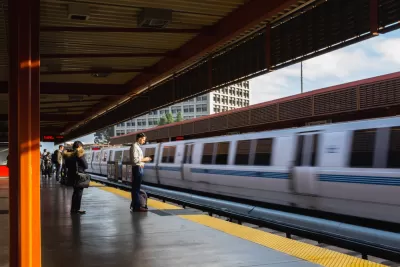A recent study by the Transit app reveals which communications methods are the most and least effective at reaching demographic groups representative of transit riders.

A new report by the Transit app examines the reach of communications channels—e.g., the Transit app, social media, emails, etc.—in reaching transit riders with critical information like service changes, fare payment, and mask mandates. The findings inspire a provocative headline for a blog post explaining the report's findings: "Transit Twitter isn't real life."
When communication channel reach is sorted by income and race in the United States, social media and public meetings fail the equity test of reaching representative populations of riders. Apps, signage, and customer support phone lines, it turns out, are more effective for reaching low-income riders and people of color.
For example, "social media is 3.5x more popular with high-income riders than low-income riders," according to the article. Twitter is the least representative of all: "High-income riders were 7.8x more likely to use Twitter for transit information than low-income riders and 2.1x more likely to use Instagram, whereas Facebook had a near-even split."
The communications findings are a component of the Transit app's larger quarterly Rider Happiness Benchmarking survey, which surveyed 21,000 transit riders across United States about their public transit experience.
A lot more detail on effective, equitable transit communications are included in the source article linked below.
FULL STORY: Transit Twitter isn’t real life

Maui's Vacation Rental Debate Turns Ugly
Verbal attacks, misinformation campaigns and fistfights plague a high-stakes debate to convert thousands of vacation rentals into long-term housing.

Planetizen Federal Action Tracker
A weekly monitor of how Trump’s orders and actions are impacting planners and planning in America.

In Urban Planning, AI Prompting Could be the New Design Thinking
Creativity has long been key to great urban design. What if we see AI as our new creative partner?

Pedestrian Deaths Drop, Remain Twice as High as in 2009
Fatalities declined by 4 percent in 2024, but the U.S. is still nowhere close to ‘Vision Zero.’

King County Supportive Housing Program Offers Hope for Unhoused Residents
The county is taking a ‘Housing First’ approach that prioritizes getting people into housing, then offering wraparound supportive services.

Researchers Use AI to Get Clearer Picture of US Housing
Analysts are using artificial intelligence to supercharge their research by allowing them to comb through data faster. Though these AI tools can be error prone, they save time and housing researchers are optimistic about the future.
Urban Design for Planners 1: Software Tools
This six-course series explores essential urban design concepts using open source software and equips planners with the tools they need to participate fully in the urban design process.
Planning for Universal Design
Learn the tools for implementing Universal Design in planning regulations.
planning NEXT
Appalachian Highlands Housing Partners
Mpact (founded as Rail~Volution)
City of Camden Redevelopment Agency
City of Astoria
City of Portland
City of Laramie




























